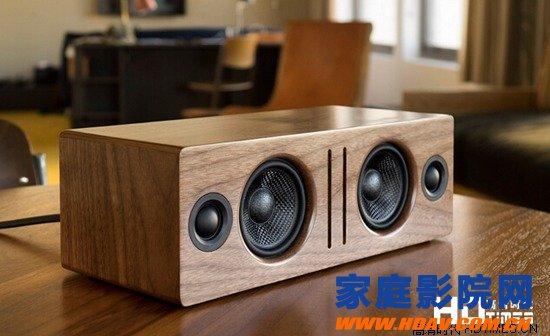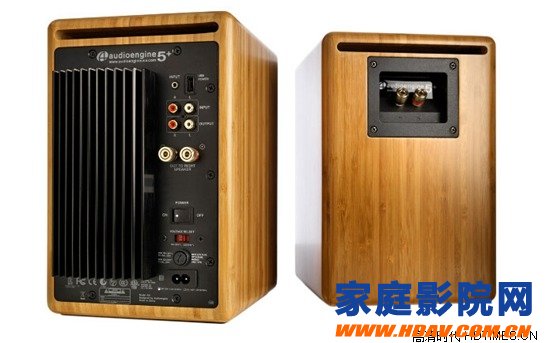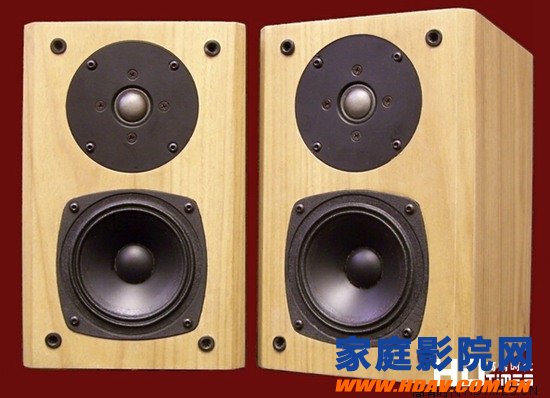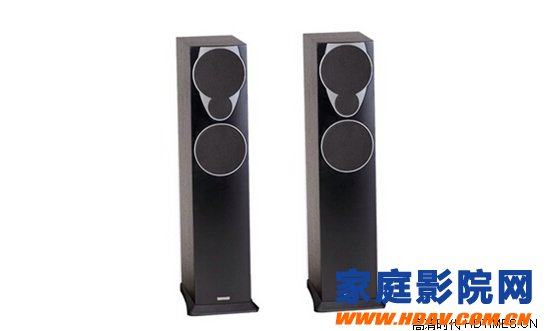[Home Theater Network HDAV.com.cn] How to choose hifi speakers, this is a very headache for many consumers. But in fact it is not so difficult, as long as you master the following elements to identify the speaker, then how to identify the advantages and disadvantages of hifi speakers will no longer be a problem for you.
Identification of technical indicators
1, sensitivity rate
There is usually a technical label on the back of the finished hifi speaker: the content is nothing more than the frequency range, sensitivity, carrying power and impedance of the speaker. The sensitivity rate is the most important indicator of the speaker, which determines to a large extent what kind of power amplifier should be selected for the box, how much power to push and so on.

The sensitivity of most audio-visual home speakers is between 86-92dB. For the same amplifier, at the same volume (such as the volume is turned to 10 o'clock), the higher the sensitivity, the greater the sound, the speaker pair The power requirements and requirements of the amplifier will be lower. This is what people often say: this is a good push for the speakers.
But don't think that the higher the sensitivity, the better. In fact, speakers with a sensitivity of more than 92dB are lighter, thinner metal basins, PP basins, etc., which can cause damage to the control of the horn. It leads to thin sound, partiality, exaggeration, and toughness, and lacks the details and charm of many music. Not suitable for Hi-Fi detection.
Many brand-name speakers with thick and soft sounds are usually less sensitive. For example, the top speakers such as the British ATC, the Italian famous piano, and the Zhuoli are only 82dB. These types of speakers are often extremely difficult to service, and require a giant power amplifier with a large output current to operate in an ideal linear region.
2, the frequency range
The frequency range of the domestic boutique Xindak Compass No. 1 bookshelf box is 60Hz~20KHz±2.5dB, and 60Hz indicates the extension value of the speaker in the low frequency direction. The lower the number, the better the low frequency response of the speaker: 20KHz represents the high frequency extension that the speaker can achieve. The higher the number, the better the audio characteristics. The ±2.5dB suffix indicates the distortion of the frequency range of the above segment. The smaller the distortion, the flatter the frequency response curve.

Some speakers are marked with a distortion of ±3dB and their frequency range should be wider. Some speakers do not indicate this indicator, and the frequency extension range becomes very wide. For example, if the compass one box does not indicate that the distortion is controlled within plus or minus 2.5 decibels, the frequency range can be marked as 40 Hz to 23 kHz. It should be pointed out that the frequency range without the distortion is meaningless. If the manufacturer knows what to do, it can only be suspected of being bad-hearted and deliberately deceiving consumers. At the same time, it also indicates that the speaker index is not standardized, and the manufacturer lacks confidence in its own products, making it difficult for people to buy with confidence.
3, carrying power
It is a reference indicator of the speaker. It is expressed by how many watts. This indicator does not indicate the quality of the speaker. It only provides a reference for the optional power amplifier: for example, the bearing power of a pair of speakers is marked as 10~200W. That is to say, the power amplifier required to drive the speaker must have at least 10W of output power, but avoid using an amplifier of more than 200W for full power output. Otherwise there may be concerns about burning. Generally speaking, the home speakers will never be pushed. Only the push and push problems are pushed. The load power below 200 watts is more than enough for the average family. It is not deliberately pursued too high. .
4, the impedance value
Generally, 8Ω is the nominal value. Most of the two-way bookshelf have an impedance of 8Ω, and the multi-unit multi-frequency terrestrial speaker also has 6Ω and 4Ω. The smaller the impedance value, the larger the current that needs to be pushed, and the required power of the power amplifier is correspondingly higher. In terms of the author's opinion, it is better to choose a 8Ω impedance for the home speaker.
Sound quality discrimination
1, test the quality of low frequency
The low frequency produced by inferior sound can be astounding, but it is completely bloated, lacking in layering and firmness. Good low frequency should be clean and bright, with distinct layers, no muddy water, and no sorrow, even if various low-frequency instruments such as drums, bass guitars and piano bass can be easily distinguished. So don't be fooled by the low-frequency sense, the inferior low-frequency is not as comfortable as the clean sound.

2, test the IF vocals
Vocals are the most commonly heard voices. The pros and cons are not difficult to detect. Pay attention to whether the vocals have unusual nasal sounds or the feeling of being snorted. The "box sound" of some speakers will also greatly interfere with the intermediate frequency, making the sound of this band ambiguous. IF sound is more serious than other frequencies, because most of the audible frequencies, or the frequency of the music, are concentrated in the mid-range, which is a replay for almost all types of music. Obstacles.
Usually we will use Tsai Chin's songs to evaluate the mid-range vocal performance of the sound. Tsai Chin's voice is like a glass of alcohol that can't be alcoholic, not only rich in atmosphere, but also conveys a very thick from the depth of the word and sound line. Sadness, when we listen to Tsai Chin's song with the celestial string, the first thing I feel is the medium frequency, the mellow, the vocal reduction is accurate, the sound is very little, and I don't hear the "box noise."
3, test the high frequency flexibility
Inferior high-frequency is squeaky in the ear, listening to people with a splitting headache, in extreme cases the violin or soprano's melody becomes the sharp noise of the brakes. Similarly, different instruments in the treble produce different textures, and good treble can be distinguished. The high frequency of the superior and inferior level can even distinguish the different phonographs played by two different woods of different years.
The easiest thing to master is that good treble is not audible and fearful, the pores are erected, and it is not too tiring, and it is soft and flexible, smooth and layered. Up to the highest point is still easy to hear but does not produce accent (of course not based on the recording of the singer).

4, test high volume and sound field image
Some speakers are stable at low volume, but they are distorted when the volume is raised to an index, or "shooting", and various non-recorded music signals appear. Specifically, if the orchestra is one of the favorite, you must pass this level. The standard-compliant speakers make the sound out of the box to a certain extent, creating a clear sound field and image, showing the position and texture of the different instruments, and having sufficient diffusion to grow, wide and high audio space.
The mute and the tail should be clearly heard, and in the case of large volume and "big burst" without distortion, the vocals and instrumental sounds will not be entangled. The high-quality replay can show a rich sense of music and air, and the bounce of the notes, like the clouds and see the sky, showing the whole sequence of audio and video. More directly, it will not be exhausting when you listen for a long time.
More fresh and fun home theater information, please pay attention to home theater network http:// (WeChat: cnhifi), the country's most influential home theater audio player interactive media website.
This Automation curtain is specially designed for automation industry. SDKELI LSC2 light curtain is designed for automation field, with small size, compact structure and strong anti-interference ability, and the product meets IEC 61496-2 standards. The automatic light curtain is with reliable quality and very competitive price. It has been used in many factories and has replaced curtains from Omron, Banner, Keyence, etc.
Automatic Light Curtain,Laser Light Curtain,Automation Light Beam Sensor,Automatic Infrared Beam Sensor,Infrared Beam Curttain Sensor,Infrared Beam Sensor
Jining KeLi Photoelectronic Industrial Co.,Ltd , https://www.sdkelien.com